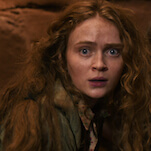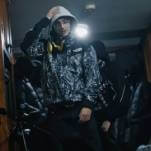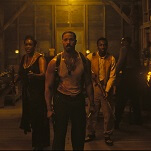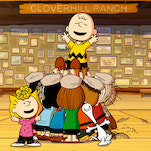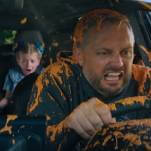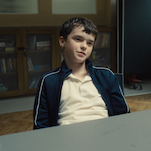Bad Day At Black Rock remains an essential anti-McCarthyite text
70 years after its release, John Sturges’ 1955 masterpiece remains a subversive postwar American classic.
Photo: MGM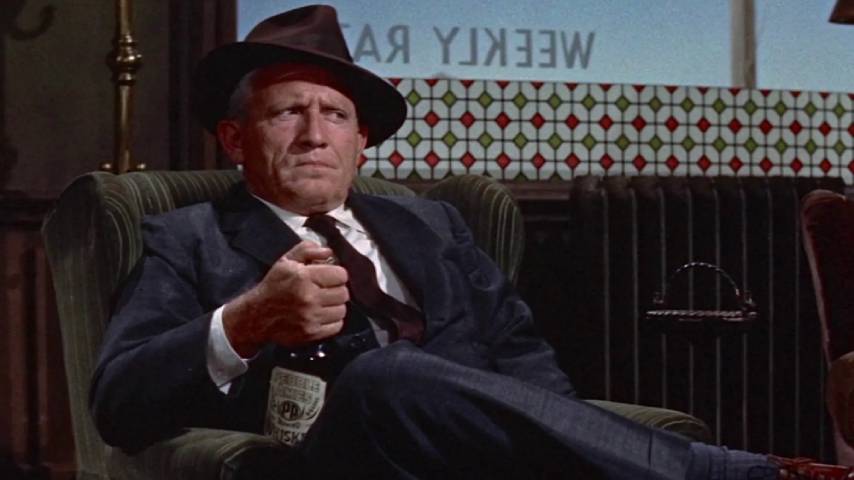
Music blares as the CinemaScope logo fades—a train guns across the Mojave. It is like a gut punch. The camera flies over the modern streamliner, shooting like a bullet through the desert. Unexpectedly, its horns blow and it halts to a stop in a little nowhere place. The whole town stands up and shuffles out of their shops in disbelief. An old, one-armed man steps off the train. “Man, they woebegone and far away,” the conductor says. “I’ll only be here 24 hours,” the man says. The conductor starts to wave away, “In a place like this, that could be a lifetime.”
The local telegraph operator runs up to the man, saying there must be a mistake. The passenger line hasn’t stopped in Black Rock for four years. The one-armed man says he’s looking for a place called Adobe Flat. The telegraph operator looks even more nervous. When the one-armed man heads off the platform into the hamlet, the telegrapher gets on the phone telling someone what the stranger is looking for. The town is a mob of people as curious as they are paranoid and nervous—they’re hiding something.
Before getting into the meat of John Sturges’ 1955 masterpiece Bad Day At Black Rock, it’s worth mentioning that part of the magic of the film comes not knowing what the film reveals itself to be about, and is best experienced for the first time as if you just got off the train at some strange desert station with no idea what you’ll find—or even what you’re really looking for. With that being said, spoilers ahead.
The man who gets off the train is named Macreedy, played unflappably by Spencer Tracy. Audiences in the 1950s would have already been attuned to Macreedy’s position—as well as that of the other characters—the moment they laid eyes on the actors. By the time Bad Day At Black Rock rolled around, Tracy was established as playing stubborn yet principled paternal figures, while his counterpart Robert Ryan (playing Reno Smith) had an affinity for bad cops and sketchy outlaws. Not to mention, Smith’s henchman are played wonderfully by two of the best in Hollywood at playing sleazy sidekicks: Lee Marvin giving a signature slack-jawed performance alongside the brilliantly brutish Ernest Borgnine (who would show his full range in 1955, going on to actually beat Tracy for the year’s Best Actor Oscar with his incredible dramatic work in Marty).
Set in 1945, Bad Day At Black Rock eventually reveals, from a conversation with Macreedy’s local foil Smith, that Macreedy is looking for a Japanese-American farmer named Komoko. “Never stood a chance,” Smith tells him, given that Komoko moved to Black Rock only a few months before Pearl Harbor and was quickly shipped off to an internment camp. It’s obvious from the town’s trepidation, however, that this is not the whole story. Not to mention, when pressed, Smith’s racism and resentment against the Japanese boil to the surface.
Macreedy leaves to investigate Adobe Flats, while Smith and the locals meet up by the train tracks. Some downplay Macreedy’s intrusion, but Smith is insistent: “I know those maimed guys. Their minds get twisted, they put on hairshirts and act like martyrs. All of them are do-gooders, freaks, troublemakers…This guy’s like a carrier of smallpox. Since he’s arrived, this town’s had a fever, an infection. And it’s spreading.” The injection of a conscience into Black Rock by way of Tracy’s Macreedy has broken the terrified psychosis of the town. People now have to pick a side about what they are to do about their collective guilt around what is becoming clear to Macreedy and the audience: that the locals killed Komoko in a racist rage.
After a harrowing return from Adobe Flat, where Macreedy is almost run off the road by one of Smith’s goons, Macreedy meets again with Smith, who waves off the burned-down house as something some teenagers did after Komoko was shipped off to a camp. Macreedy points out that he found some wildflowers growing at Adobe Flat, something which, he learned from the war, happens when a body is buried. Macreedy knows that it’s Komoko, and he slyly pokes at Smith’s racism by saying he assumed it wasn’t a human grave because it wasn’t marked.
Macreedy and Smith are perfect foils: Where Macreedy is the valorous veteran, Smith is the man who wanted to enlist but was rejected. Where Macreedy is driven by contemplative principle, Smith is pure reaction. When confronted with the threat against their lives—for Smith, the possibility that his murder of Komoko will catch up to him; for Macreedy, the threat that Smith and his cronies place on him in this isolated, inescapable setting—Smith does everything in his power to protect himself and try to justify his actions, while Macreedy continues on because he knows he is in the right, reluctantly risking himself on moral principle like a character out of Kierkegaard or a chivalric romance.
But while their character tropes are as old as storytelling, the context of the film is distinctly contemporary to the 1950s. While set 10 years prior to the film’s release, Bad Day At Black Rock is a decidedly post-war, anti-McCarthyite work of the left-leaning undercurrent in Hollywood—one that the violently conservative American government and so many of its collaborators in the studio system sought to suppress.


